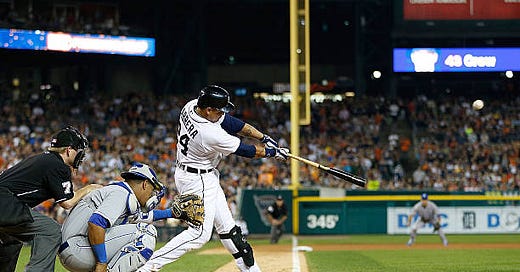There have been a lot of baseball seasons.
It depends on how you count them, because some leagues are sometimes considered “major league” and sometimes not, and the seasons from the various Negro Leagues that were finally recognized as major league represent just a subset of the years Black ballplayers played in their own, excellent leagues.
That said, near as I can tell, as of now there have been 337 different seasons that are considered major league in one place or another. That ranges from 147 seasons of baseball in the National League down to one season each in the Players League, the Union Association, and a couple of the Negro Leagues.
That’s 337 chances for a hitter or pitcher to win a Triple Crown. Hitters have managed to accomplish the trick - leading the league in batting average, home runs, and RBI in the same season - a total of 28 times. The last to do so was Miguel Cabrera in 2012, for which he was awarded the American League MVP Award. That math works out to seeing a Triple Crown hitter in 8% of all seasons played.
Keep reading with a 7-day free trial
Subscribe to Lost in Left Field to keep reading this post and get 7 days of free access to the full post archives.




